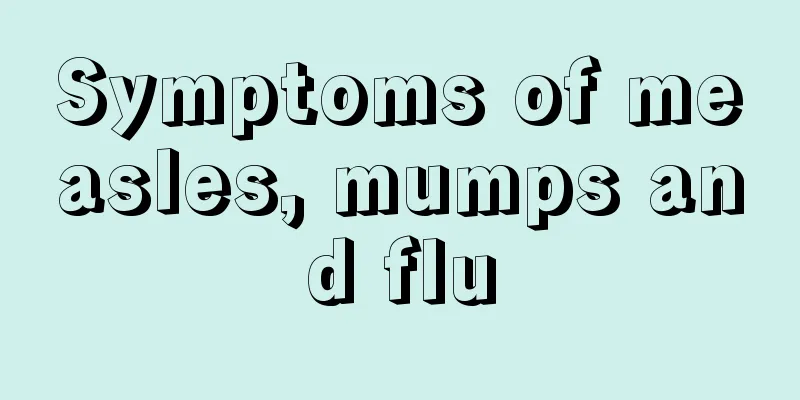What are the symptoms of advanced lung cancer? You should know the two major signs of death before lung cancer

|
When it comes to lung cancer, everyone will definitely associate it with death. The mortality rate of lung cancer is very high, which is also an important reason why everyone is more worried about lung cancer. Before dying, lung cancer patients will have edema of the face and neck, shortness of breath and hoarseness. In the late stage of lung cancer, patients will have extrathoracic metastasis and lung metastasis. Lung cancer is a disease with a very high incidence and mortality rate. Everyone should have some understanding of it. Once lung cancer patients develop symptoms, their bodies will show some abnormalities, which have a great impact on their health and life. In addition, the mortality rate of lung cancer is very high. If it is not treated promptly and effectively in the early stage, the condition can easily worsen or even lead to death. Today, experts will introduce the advanced symptoms of lung cancer and signs of death. The symptoms of advanced lung cancer are divided into symptoms of extrathoracic metastasis and non-extrathoracic metastasis. The following is a detailed introduction: 1. Symptoms of extrathoracic metastasis of lung cancer: Lung cancer will metastasize along the patient's lymphatic vessels and blood vessels, usually to the lymph nodes in the neck, adrenal glands, brain, liver, and kidneys. Nearly 15% of lung cancer patients will experience symptoms of metastasis. 2. Non-metastatic symptoms outside the chest of lung cancer: Only 2% of lung cancer patients will experience non-metastatic symptoms outside the chest. The symptoms of non-metastatic symptoms outside the chest are relatively complex, and more systems are involved. The pathogenesis is unclear, so it poses a greater threat to patients. The signs of death from lung cancer are as follows: 1. Edema of the face and neck: There is a superior vena cava on the right side of the human mediastinum, which returns venous blood from the upper limbs and the head and neck to the heart. If the lung cancer tumor invades the right side of the mediastinum and compresses the superior vena cava, the jugular vein will become distended due to poor blood return, and the patient will experience edema of the face and neck. 2. Shortness of breath: If lung cancer spreads regionally, patients will experience shortness of breath to varying degrees. Tissue fluid produced by the lungs and myocardium flows back through the lymph nodes in the middle of the chest. If these lymph nodes are blocked by lung cancer tumors, they will accumulate in the pericardium, forming pericardial effusions, or accumulate in the chest cavity, forming pleural effusions, which will cause patients to experience shortness of breath. |
<<: How to prevent lung cancer in daily life? There are four main types of lung cancer
>>: What diseases are similar to lung cancer? You should know these early symptoms of lung cancer
Recommend
What are the causes of pain below the left sternum?
Judging from the clinical symptoms, the pain belo...
Are there lymph nodes in the abdomen?
Everyone must know many types of lymphatic diseas...
What causes itchy lips and itchy edges?
If your lips are itchy and the edges of your lips...
Can mulberry leaves be fried and eaten
In people's daily diet, in addition to eating...
How many meters can a three-month-old baby see
Parents who have children should know that when a...
How long can you live with bladder cancer?
Bladder cancer is one of the most common tumors i...
How heritable is glioma
When people are alive, health is more important t...
How long can one live with advanced bone cancer
Survival time for patients with advanced bone can...
What's causing the pain on the right side of your chest? Be careful of these diseases
Do you take chest pain seriously in your life? So...
What are the symptoms and consequences of mercury poisoning?
Mercury is a white liquid that will evaporate at ...
The function of medium frequency electrotherapy instrument
Medium frequency electrotherapy is a physical the...
How to deal with blisters after they burst
Blisters may form on the surface of the skin due ...
How does cervical cancer develop? What misunderstandings should we be aware of regarding cervical cancer?
Women bear great responsibilities for the family ...
Does sour plum soup relieve internal heat?
Female friends have no resistance to all kinds of...
Everyone should be aware of the routine examination methods for esophageal cancer in a timely manner
In recent years, the incidence of esophageal canc...









